Parsley Vs Parsley Difference between Curly Parsley and Flat leaf

FileParsley.jpg
Italian parsley. On the other hand, Italian parsley plants have a much darker green color and their leaves are flat. Hence, why it's often referred to as flat-leaf parsley. If you ever see a recipe that mentions flat leaf parsley, it's referring to Italian parsley. The stems are thinner, and the leaves are wide, flat and floppy.

Parsley Vs Parsley Difference between Curly Parsley and Flat leaf
Indeed, Italian parsley is typically favored by chefs for its more pungent herbaceous taste, which is often described as fresh, clean and slightly peppery. Curly parsley, on the other hand, is nearly tasteless and most often used as a garnish to add color and texture, without affecting (or enhancing) the flavor profile of a dish.
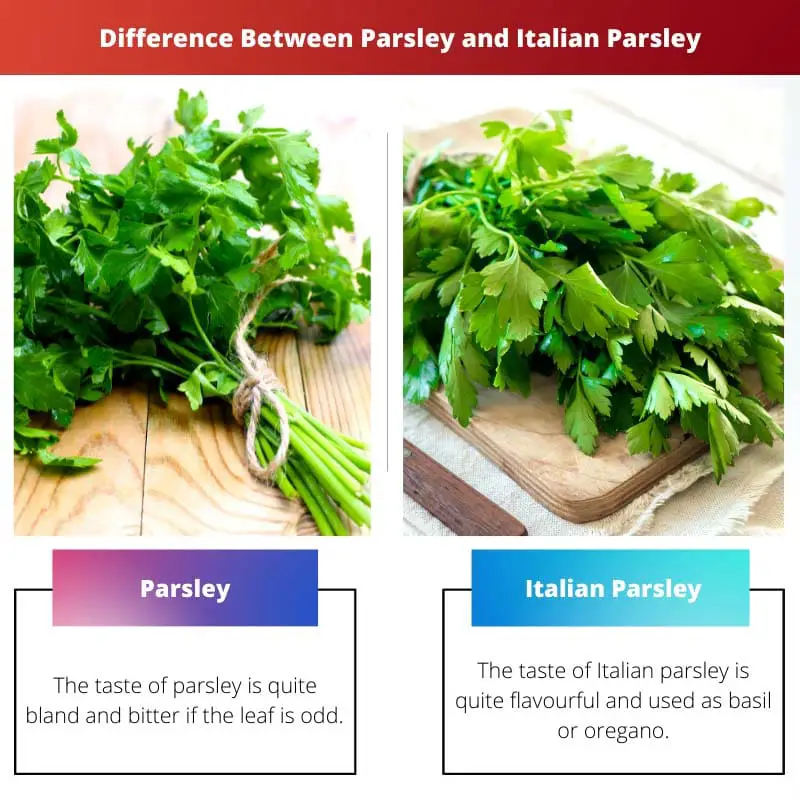
Parsley vs Italian Parsley Difference and Comparison
HOW TO USE. After picking the leaves off the stem, bunch them on the cutting board. Then slice: Curl the fingers of your free hand like a claw (so they stay clear of the knife), put your.

How to Harvest Parsley Without Killing the Plant? Try This! Outdoor
Italian Parsley vs Regular Parsley: Final Thoughts Parsley makes for a great addition to any pantry and will add a special touch to many dishes, whether as a cooking ingredient or garnish. This versatile herb can be used in numerous dishes such as meats, herb-infused bread, baked goods, meatballs, Italian Gremolata, and Chimichurri , as well as.
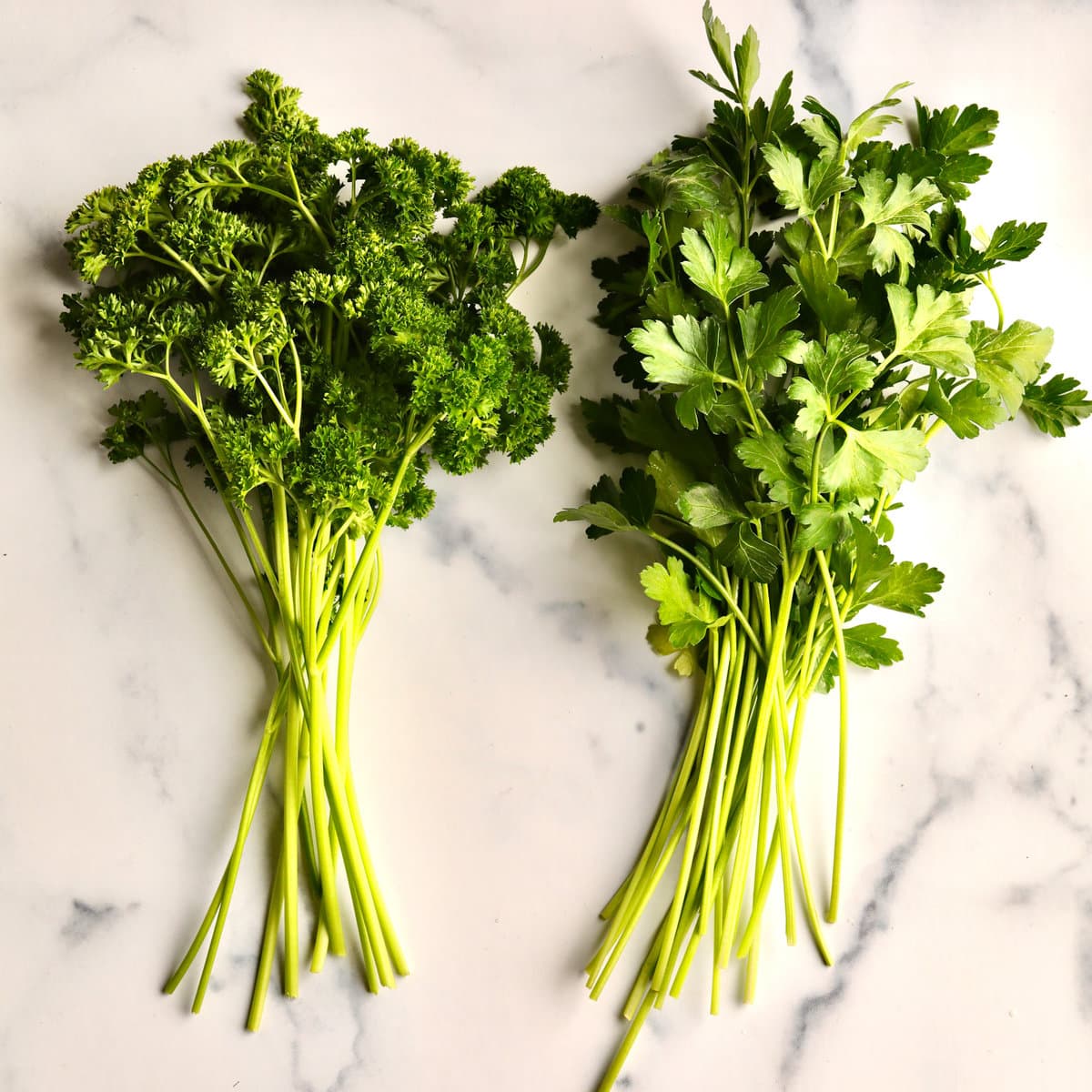
Parsley vs. Italian Parsley What’s the Difference? CucinaByElena
The foliage of curly parsley is more attractive as a garnish, but flat-leaved Italian parsley has the most flavor when cooked. The curly leaf grows about 10 inches tall, the Italian about 18 inches. In the second year, 2-foot-tall flower stalks appear, and their blossoms ripen into seeds. Seeds collected from second-year plants and dried.

Italian Parsley vs. Curly Parsley Is There a Difference? HappySprout
Parsley vs Italian Parsley. Parsley is a biennial herb that is used as a garnish and in cooking for its fresh, herbaceous flavour. It has flat leaves and is used as a garnish or as an ingredient in sauces, soups, stews, and other dishes. Italian parsley resembles regular parsley but with broader, flatter leaves.
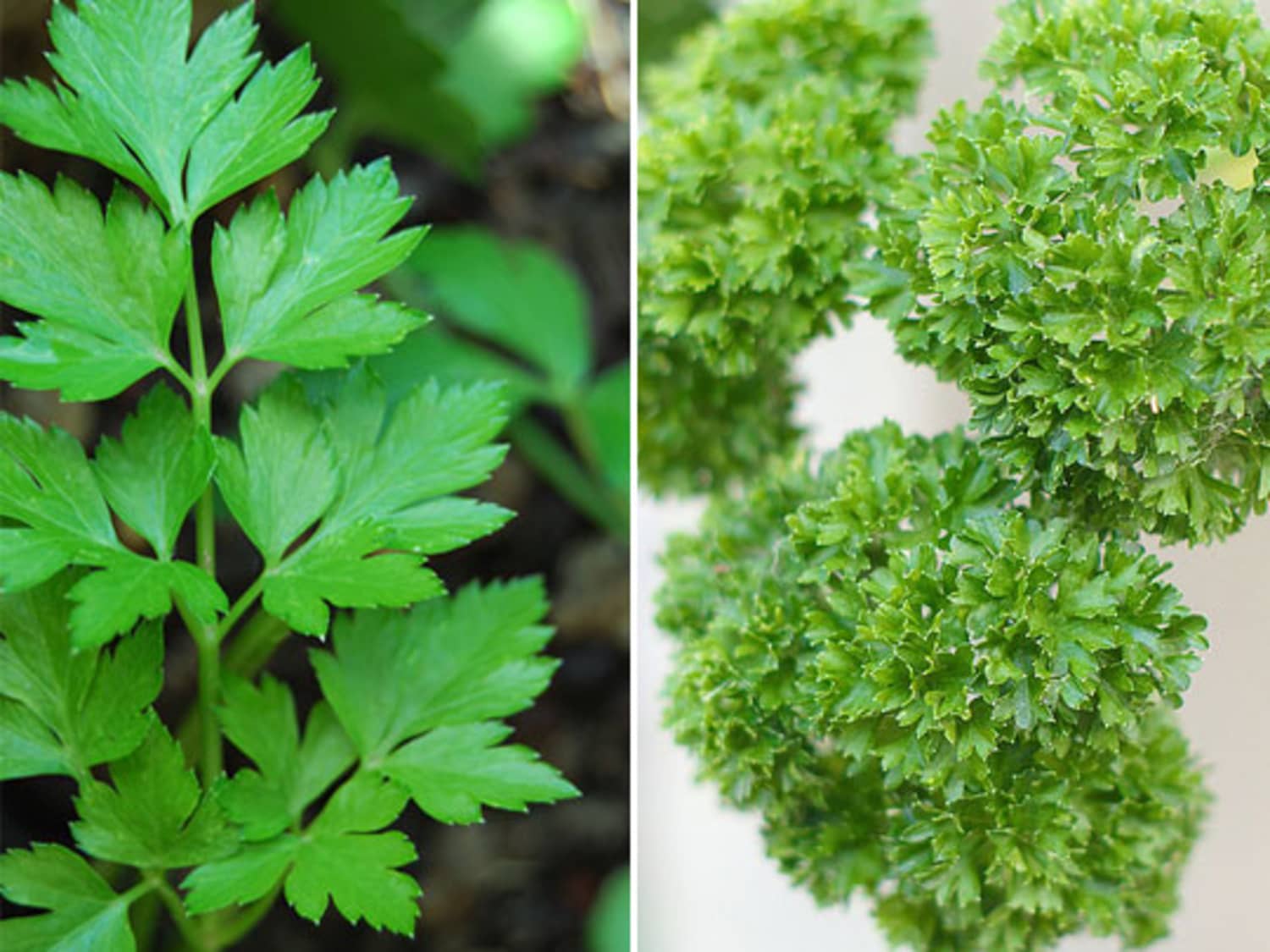
What is the difference between Italian parsley and regular parsley
Here are 3 key differences between curly parsley vs Italian (flat-leaf) parsley: Appearance- They look different! Italian (flat-leaf) parsley has broad, flat leaves, whereas curly parsley has thicker and curly leaves. Taste and Texture- Italian parsley has a smoother texture and stronger flavor than curly parsley, which has a more muted flavor.

Parsley Leaf
Storage Tips. Italian Parsley: Flat leaf parsley has a longer shelf life and retains its freshness better. Store it similarly in the refrigerator, but it can last a bit longer before showing signs of wilting. Curly Parsley: With its crisp texture, curly parsley tends to wilt more quickly. Store it in the refrigerator, wrapped in a damp paper towel or in a plastic bag, to maintain its freshness.

Although Parsley and Basil are quite similar in certain aspects, they
The first difference between flat leaf parsley and curly parsley has to do with leaf-shape, as the herbs' names indicate. Flat leaf parsley's leaves are straight like the cilantro leaves while the leaves of curly parsley have a ruffled appearance. Italian parsley is the variety most often used in Mediterranean cooking because of its bright.
.png)
Buy Mixed Herbs Online in india
Firstly, the difference between flat-leaf parsley and Italian parsley is the name only. The Italian part of the name is because the flat-leaf parsley originated in Italy. So, you will see the two terms used interchangeably. Secondly, Italian parsley and curly parsley belong to the same biological family - the Umbelliferae.
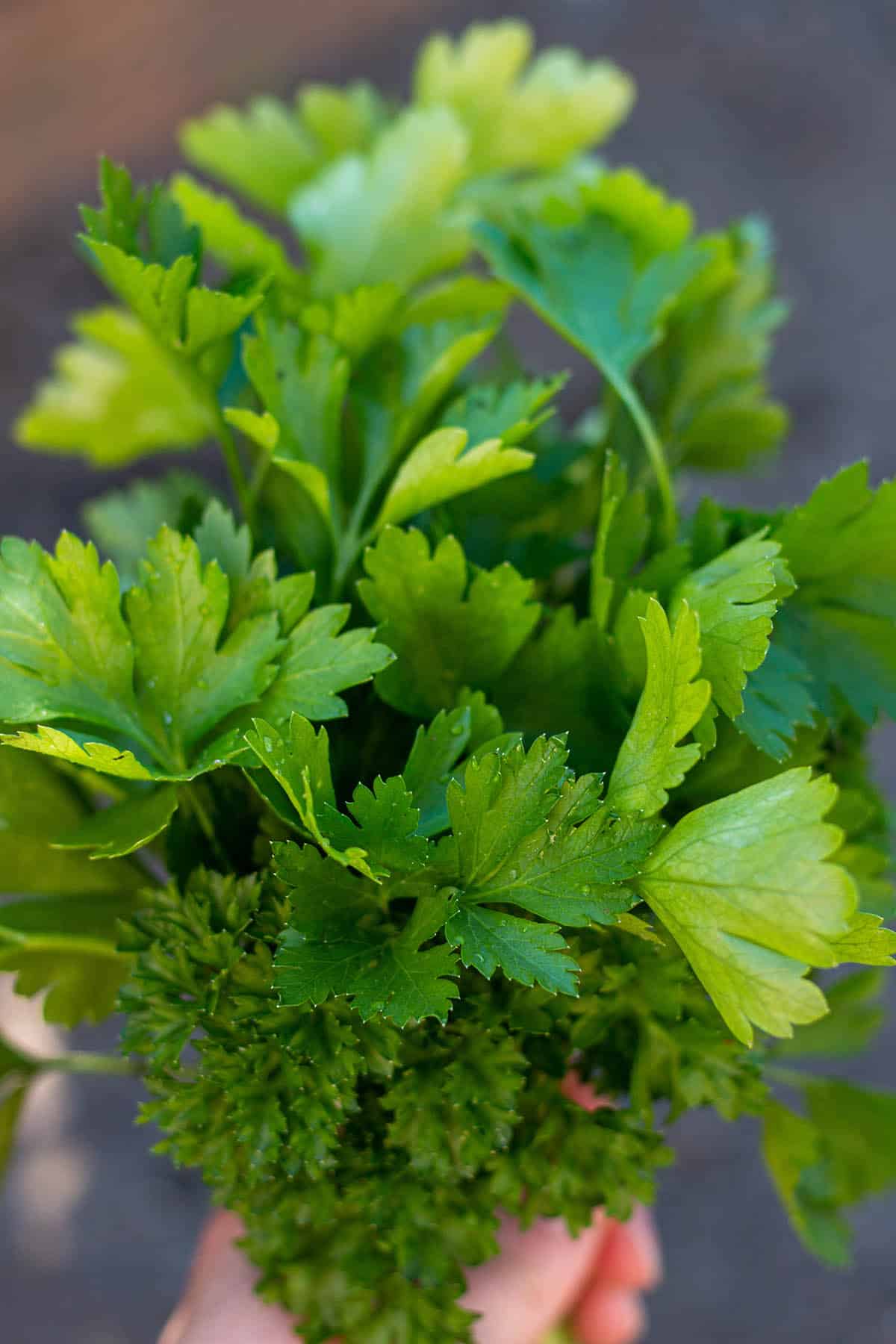
How to Cut and Harvest Parsley From the Plant Dirt and Dough
When you go shopping for parsley, you should be able to differentiate Italian Parsley vs. Parsley. Parsley is one of the most-used culinary herbs worldwide. In the market, you will find flat-leaved parsley and curly-leafed parsley.. The popular D'Amico's Italian Market Café, a 16-year-old mainstay of Rice Village, is head. Nov 12, 2014; 4531.

Curly Parsley vs. Italian Parsley What’s the Difference (and Which One
Italian parsley became popular in the U.S. in the 1970s, where, previously, mostly curly parsley from France was used. Later on, the term "flat-leaf parsley" became a common name for the Italian variety. Obviously, one of the main differences between curly vs. flat-leaf parsley is the appearance of the leaves. The former appears more ruffly.

Chervil Vs. Parsley SPICEography Showdown
That said, the only ones you're likely to see in the store are curly and Italian parsley—the latter being the more flavorful of the two. Indeed, Italian parsley is typically favored by chefs.
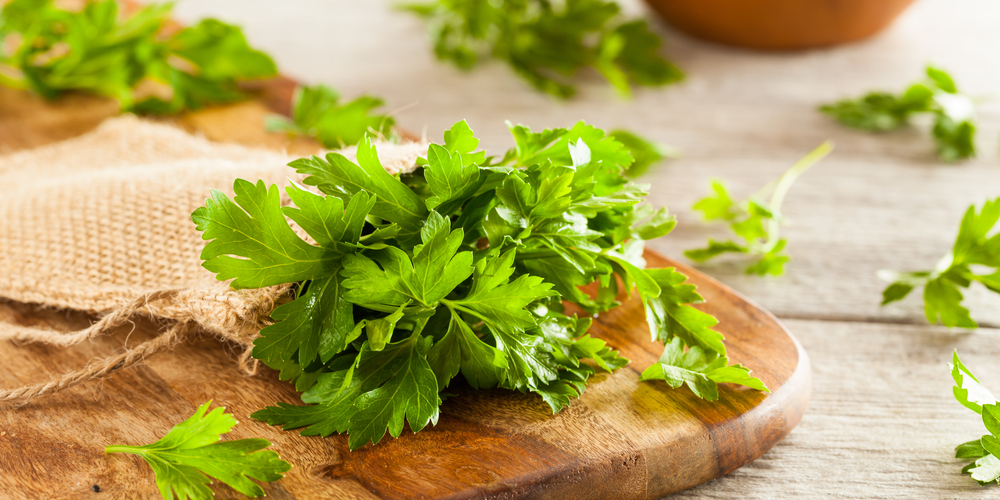
Italian Parsley vs Regular Parsley GFL Outdoors
For 1/3 cup regular, use 1/4 cup Italian. For 1 tablespoon regular, substitute 3/4 tablespoon Italian. As you add the Italian parsley, taste and adjust amounts as needed. Those who enjoy big flavors may prefer using equal quantities. But for most palates, a bit less Italian parsley prevents the flavor from becoming overpowering.

How to Grow Parsley in an Organic Herb Garden • Gardenary
Italian parsley is a variety of the parsley plant used as an herb in a wide range of cuisines around the world. The slender stems give way to dark, flat leaves that taste robust and fresh. This herb, also known as flat-leaf parsley, is sold on the stems but only the leaves are most commonly used in cooking, which can be added whole or chopped..
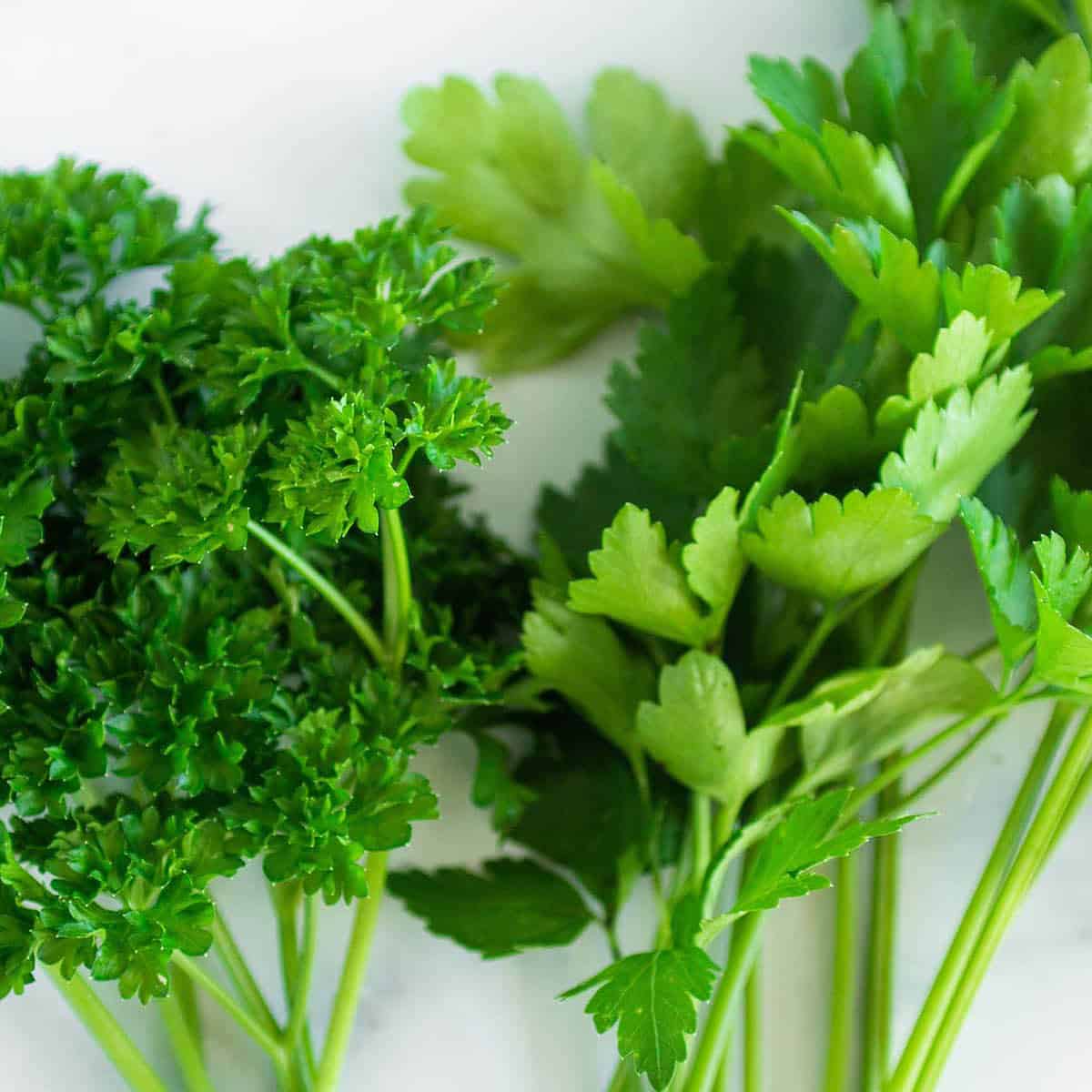
FlatLeaf Parsley vs. Curly Parsley What's the Difference? Dirt and
The leaves of Italian parsley are larger than Parsley's with fewer serrations on its edges. Parsley has a slightly darker shade of green in comparison to Italian Parsley's lighter shade. Italian parsley bears a milder flavor than the more intense taste of regular parsley. The stems of Italian parsley tend to be tougher than Parsley, which.